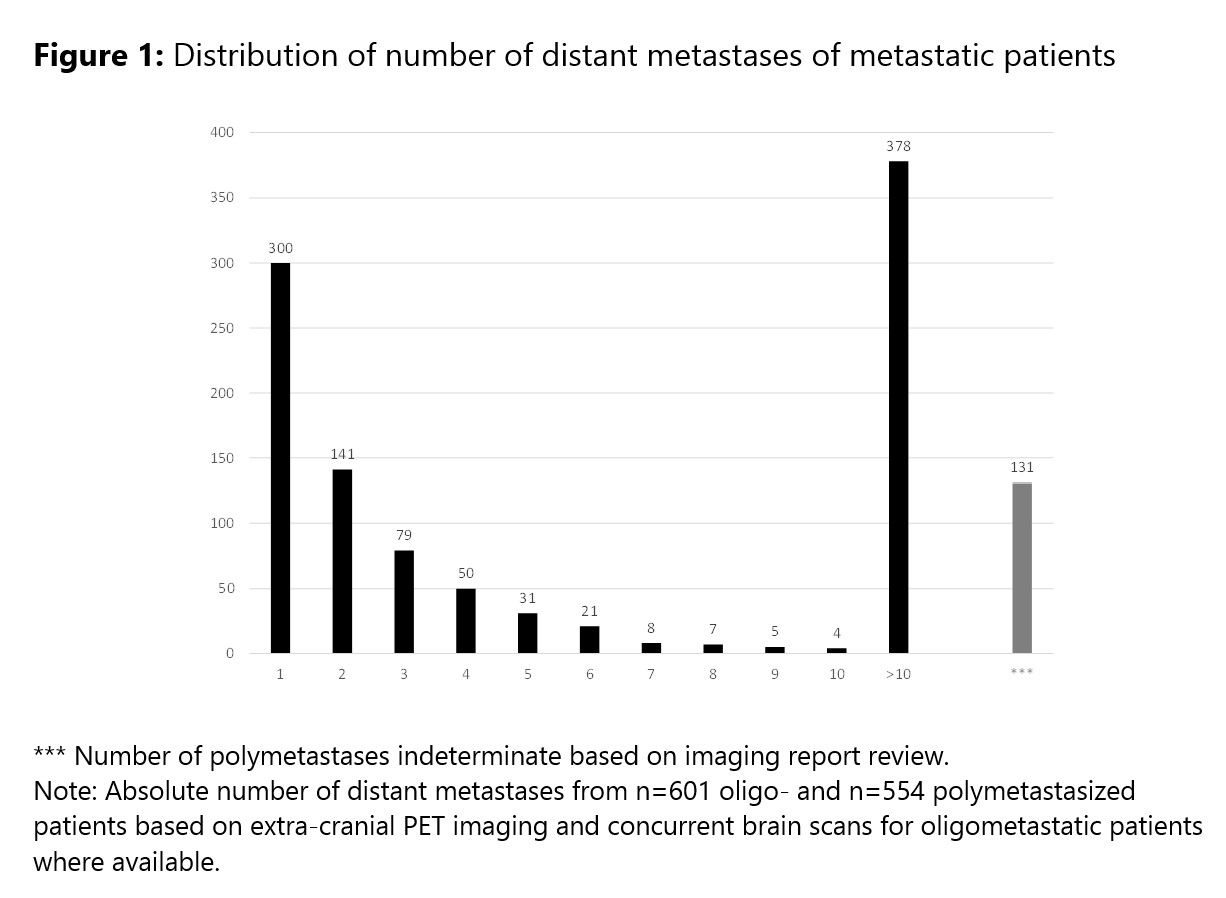Metastatic tumor burden in cancer patients: implications for the oligometastatic spectrum theory
Sebastian M. Christ,
Switzerland
PO-1606
Abstract
Metastatic tumor burden in cancer patients: implications for the oligometastatic spectrum theory
Authors: Sebastian M. Christ1, Kaspar Pohl2, Jonas Willmann1, Philip Heesen1, Maiwand Ahmadsei1, Urs. J. Muehlematter3, Anja Kühnis1, Eugenia Vlaskou Badra1, Michael Mayinger1, Panagiotis Balermpas1, Nicolaus Andratschke1, Martin Huellner3, Matthias Guckenberger1
1University Hospital Zurich, Department of Radiation Oncology, Zurich, Switzerland; 2Waidspital Zurich, Department of General Surgery, Zurich, Switzerland; 3University Hospital Zurich, Department of Nuclear Medicine, Zurich, Switzerland
Show Affiliations
Hide Affiliations
Purpose or Objective
Definitions of oligometastatic versus polymetastatic disease vary, yet a cut-off of five solid organ metastases is frequently used for their differentiation. The benefit of definitive local therapy in metastatic cancer patients might not optimally captured in such a binary model, but may – in analogy to the spectrum theory of metastasis – rather vary gradually along the actual tumor burden and the associated risk of occult distant metastatic disease. The aim of this study is to examine metastatic patterns and quantify tumor burden in light of the spectrum theory of metastatic disease in a cohort of unselected metastatic cancer patients leveraging PET imaging reports.
Material and Methods
Imaging reports from all oncological PET scans conducted at the Department of Nuclear Medicine of the University Hospital Zurich in 2020 were screened for this study. We identified PET scans from cancer patients and analyzed imaging reports of patients with metastatic disease. Number and sites of metastasis were extracted from imaging reports, and subsequently assessed leveraging descriptive summary statistics and Chi-squared test statistics to test for statistical associations between variables.
Results
In total, 7,000 PET scans were screened, of which 5,773 (82%) imaging studies were acquired in cancer patients and 5,358 (93%) in patients with solid malignancies. One third of PET scans (n=1,754; 33%), emanating from 1,155 unique patients, showed presence of metastatic disease. Of those, 601 (52%) and 554 (48%) were classified as oligometastatic (1-5 distant metastases) and polymetastatic (≥6 distant metastases), respectively. Analysis of the number of distant metastases showed a strong bimodal distribution of metastatic burden (Fig. 1). In patients, where number of metastases could be determined based on imaging report review (1,024/1,155; 88%), 26% of patients had one solitary metastasis and 33% of patients had >10 metastases. Yet, despite 33% of polymetastatic patients having >10 distant metastases, their pattern of distribution was restricted to one or two organs in the majority of patients, and there was no statistical association between the number of distant metastases and the number of involved organs in this patient cohort.
Conclusion
In conclusion, the majority of patients in this cohort had either a solitary metastasis or a very high tumor burden with >10 metastases, with the latter scenario often being associated with affecting a limited number of organs only. We interpret these findings as evidence in support of the spectrum theory of metastasis. The ongoing assessment of the addition of definitive local therapy for metastatic patients might indeed prove beneficial for selected patients along the whole metastatic spectrum.